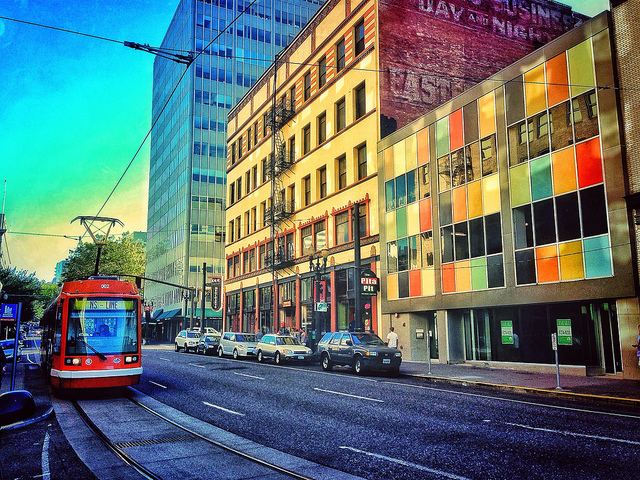The next revolution in urban transportation is coming—autonomous vehicles (AVs). While the national governments in the US and Australia have considered the technological and safety aspects of AVs, less attention is being paid to AVs’ economic impact on cities.
A new paper authored by University of Oregon professors Ben Clark, Nico Larco, and Roberta Mann intends to fill that gap by exploring the parameters of AVs’ possible impact on municipal budgets. AVs have the potential to transform cities – but whether the impact is positive or not depends on how the AVs are used.
If AVs use clean fuels, are used for shared rides, and become an on-demand service rather than an owned product, cities and society may benefit. Consumer-owned cars are inefficient and underused assets – most are used for less than one hour per day, sitting idle for about 95 per cent of their life, and about 10 per cent of the average American’s budget goes to the cost of purchasing and fuelling private vehicles.
AVs will impact land use planning, transit use, government revenues, and may exacerbate societal inequality by reducing the viability of existing public transportation services. AVs may also increase low skilled unemployment, particularly in driving occupations. Many driving jobs currently provide living wages for workers with a low level of education, but can be relatively easily replaced by AVs.
AVs have the significant potential to affect city revenues by changing land use patterns, reducing the need for urban parking structures. While this will result in a loss of parking revenue, a significant source of revenue for some cities, it will free up valuable land in the centre of cities for other uses.
According to the International Transport Forum, we may need up to 90 per cent fewer parking spaces. Parking takes up between 14 to 25 per cent of the land in centre cities. This has the potential for increasing property tax revenues, although property tax rates are significantly limited by statute in several U.S. states, such as California (Proposition 13) and Oregon.
Under Proposition 13, assessed values may not increase by more than 2 per cent per year, but a change of ownership will reset the assessed value to the purchase price. The maximum rate of property taxation is limited to 1 per cent, excluding payments for preexisting indebtedness. Localities in California have turned to other sources of revenue, such as local sales taxes, utility taxes, hotel taxes, and development impact fees. Therefore, increases in property value may not necessarily lead to significant increases in property tax revenues—even if the underlying land does increase in market value.
However, cities generate revenue from parking, although in the US it is not a significant amount – about 2 per cent of municipal budgets. In Sydney, a parking space levy (PSL), first implemented in 1992, has had a two-pronged effect: it raises funds for public transportation and it reduces urban congestion. A recent report noted that the PSL raises about $100 million per year. AVs may also steal riders from public transport by offering more comfort, convenience, and door-to-door service. Thus, public transport could potentially not only lose PSL revenue, but also fare revenue.
If AVs increase a shift to shared vehicles, sales tax revenue from automobile sales would also decline. The industries and retail associated with the auto industry could be hit hard with the shift from individual ownership to fleet models. Would we still need auto detailing and repair shops if a fleet owner had their own facilities to clean and repair the vehicles? While not all of this decline in retail would hit sales tax revenues directly—as many services are not part of sales taxes, it could impact other revenues sources for cities like income taxes or property taxes.
AVs need not be electric powered, but certainly electric car manufacturers are leading the way in providing driver-assist features that approach self-driving. A shift towards more electric vehicles would reduce fuel tax revenue. Similarly, AVs can be operated more efficiently than driver-operated vehicles, thereby reducing fuel usage even if conventionally fueled. I discussed the problems with fuel tax revenues generally in a previous blog post.
In conclusion, cities must begin to recognize the need for change in their budgeting, capital improvement plans, and organizational structure to both protect themselves against revenue losses and to be able to effectively leverage emerging technologies to further community goals. AVs are coming, and cities need to be ready.





Recent Comments